A grim metal door stands only a few hundred metres from Rottnest Island’s main ferry jetty, but most holidaymakers visiting our popular tourist island will never know what lies behind it.
Herbert Bropho opens the door to reveal a stone-walled holding cell that once held as many as 40 Aboriginal men, forced into the tiny space after their arrival on the island.
“They would be marched here from the jetty and put in here standing up,” he explains. “I call this the tin of sardines, when you open it up the sardines are all compressed, in a row. If you had some sickness you could end up dying in here.”
When hundreds of Aboriginal people gather next month on Rottnest, they will be shedding light on that dark history and seeking to lay it to rest. They call the island Wadjemup, and many have family links to its hidden past.
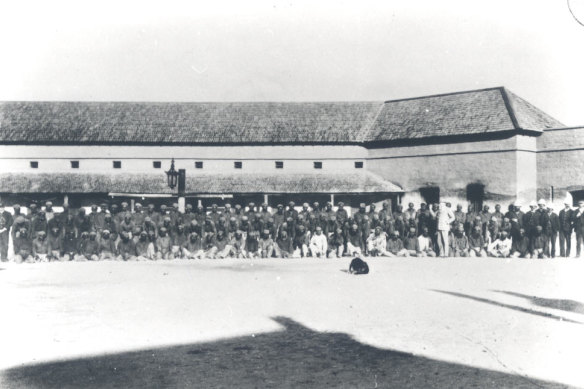
Bropho’s own grandfather Tommy Bropho was a traditional man from Wyndham who ended up there against his will. He may even have stood inside the holding cell, illuminated only by a door grille and built earlier in 1871 during the time of Henry Vincent, a sadistic Rottnest Prison superintendent.
If Rottnest Island conjures up images of idyllic beaches and furry quokkas, the name Wadjemup reflects the darker side – it is Australia’s biggest single death-in-custody site. Nearly 4000 Aboriginal men and boys – a few as young as seven – were taken from their communities and imprisoned in the island’s main prison, or Quod, from 1838 until the last few prisoners left the island in 1931.
Some men never left. At least 363 bodies are known to be buried in unmarked graves on top of which holidaymakers were permitted to pitch their tents. For 87 years the Quod’s cells were used for holiday accommodation, ignoring its harsh origins as a prison.
The Aboriginal-led Wadjemup Project seeks to address the island’s powerful past. In early November, it will conduct private ceremonies with 250 Aboriginal delegates from southwest Noongar communities and from Goldfields, Pilbara, Kimberley, Western and Central Desert regions. Many attendees will have family links to the former prison era.
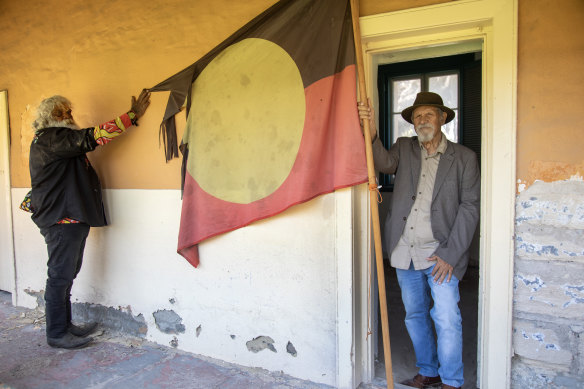
In an historic healing event five years in planning, the ceremonies will be held on Wadjemup and at Manjaree, or Bathers Beach in Fremantle, as a major milestone in Aboriginal people’s passage from grief and trauma to healing.
“It’s quite a phenomenal ceremony that we’re undertaking,” says Karen Jacobs, a Whadjuk elder and former Rottnest Island Authority director.
“We will have representatives from almost every language group in the state. We haven’t done that before for a very long time.”
The private healing ceremonies will prepare the ground for a major public event on Saturday, November 9, called Wadjemup Wirin Bidi (Spirit Trail) Commemoration Day. It invites West Australians to participate in a new chapter acknowledging Rottnest’s Indigenous past. The general public can register for free ferry rides to and from the public event.
“I don’t want to spoil your holiday of coming over,” says Bropho emphatically, “or you taking photos of the quokkas, which in our Noongar way are part of our Dreaming, the spirits of our men.
“But at the end of the day, we want to teach you about the history of this place – that’s all we want to do.”
Bropho and three other senior Whadjuk Noongar elders – Neville Collard, Farley Garlett and Richard Walley – invited WAtoday to accompany them to Rottnest Island in advance of the historic event.
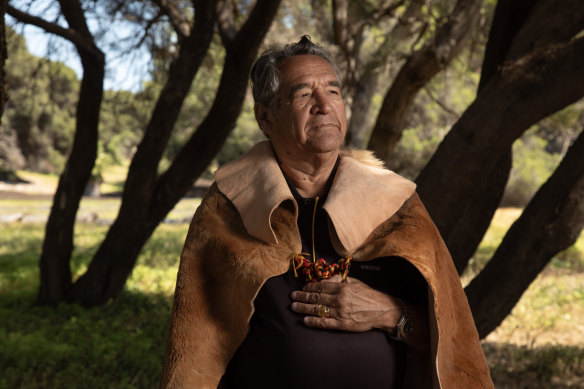
Collard, a respected Noongar man with 25 years’ service in the WA Police Force, says the group consulted widely with Noongar south-west regions and travelled north to consult regional Aboriginal organisations.
“Today you can go to the Kimberley, the Goldfields or the desert regions and people will tell you they want to know what happened to their family members on Rottnest,” he says.
Collard himself had no idea when he was growing up.
“I first came here at 12 years of age after hitching a boat ride. I didn’t know there was a prison here, or a mortuary. When I went back home, my grandfather said, ‘Go and cut the green leaves’ and we did a smoking ceremony. When I asked why, he said, ‘To get rid of the evil spirits from the island’.”
Later, Collard arrived on the island as a police officer one summer in 1976.
“What they called ‘Tentland’ was still in place and people were sleeping and drinking on top of the graves,” he says.
“It wasn’t until the 1980s that they agreed to remove the tents. Now the burial ground is overgrown by trees, and we can’t move the skeletal remains now because the roots are growing in among them.”
“Truth-telling has got to be warts and all, and the true story needs to be told about what really happened on Wadjemup.
“I now come here and teach about culture, and I get a lot of people to come and share. There’s an appetite for this story to be told.”
The Wadjemup Project seeks to redress those wrongs and ensure visitors are better informed about the island’s complete history. In May last year, the state government announced $27.5 million for the Wadjemup Project; over the next four years, consultation will include memorialisation of the grave sites and the future use of the Quod.
The move comes as Rottnest Island tourist numbers have soared to an annual visitation of 823,000.
Collard says he has conducted sessions with many school groups visiting Rottnest. “Some of the kids said to me, ‘Pop I’m not going home until I’ve been smoked’. The kids love it.”
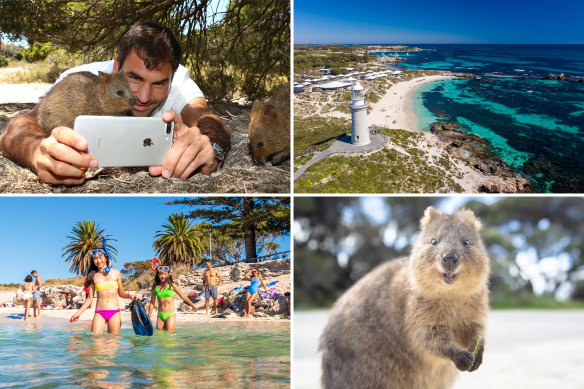
Currently closed to the public, the Quod remains a potent symbol of past injustices. Bropho walks to every cell door, knocks and shouts out to deceased inmates. The four men then stand in the spot where hundreds of Aboriginal prisoners and guards were once assembled for official photographs.
Farley Garlett, a former public servant and NAIDOC Elder of the Year, says it’s hard to imagine the anguish of tribal men from the Kimberley, Pilbara and remote desert being incarcerated far from home.
“The worst part is to imagine what they were thinking,” he says.
“They were taken far away, they didn’t know why, they arrived here in rowboats. ‘Are we here for the rest of our lives? Are we going to make it home again?’ How many got sick on the way or went overboard we don’t know.
“I’m a senior Whadjuk man and I had family on this island as well.
“It played on our mind for a lot of years that, ‘this happened on our country and we need to lay it to rest’.”
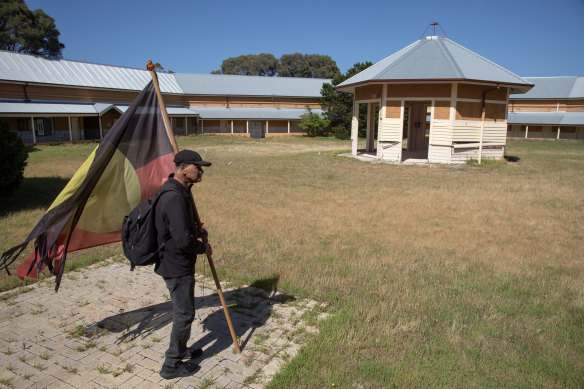
Noongar performer, writer and cultural advisor Richard Walley says the Wadjemup Project “is not us, it’s everyone we’re doing it for”.
“We’ve covered the whole state. We’re leading the process but we’re not the only ones,” he says.
“It’s unfinished cultural business – every one of us here have got connections to this place, and every family was affected.”
Jacobs says Rottnest Island has always been significant to Whadjuk people for cultural healing and celebrating rites of passage for boys.
“We have a responsibility to bring the spirit of our men back home to their rightful place. But it was a significant place for our women as well.”
She says women traditionally entered the island from the western side, at Strickland Bay, whereas men entered the island on the eastern edge, around Thomson Bay.
“It all flows into our Dreaming stories and even today, when whales beach themselves, the female whales beach themselves at Strickland Bay. So it’s interesting how still culturally segmented the whole island is.”
She says a group of women from around the state will gather at Bather’s Beach, or Manjaree, and gaze across the ocean linking Fremantle’s shore line to Wadjemup, where the men’s ceremonies will take place.
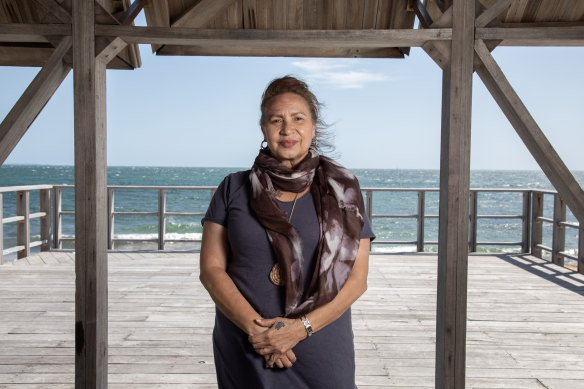
“We women will be here on the sands as the sun rises,” she says.
“The island was once connected to the mainland before the sea levels rose and it was cut off. It became the land where our spirits rest before going on to the Dreaming.
“That’s where the whole name Wadjemup comes from, the place where our spirits lie.”
People wanting to attend the Commemoration Day are asked to register their attendance at wadjemupwirinbidi.com.au. The public event will commence at Wadjemup from 10 am – 2.15 pm. Limited free return ferry tickets will be provided upon registration.


